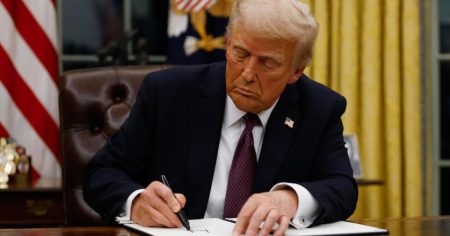Summarize this content to 2000 words in 6 paragraphs President Donald Trump on Monday signed an executive order officially creating the Department of Government Efficiency, the cost-cutting initiative helmed by billionaires Elon Musk and Vivek Ramaswamy. The EO included fresh details about DOGE’s goals and structure, such as a mandate to upgrade the government’s IT systems. Mr. Trump first announced DOGE in November with a statement that said the effort would “provide advice and guidance from outside of Government.” The goal, he added in November, would be to provide recommendations to “slash excess regulations, cut wasteful expenditures and restructure federal agencies.” Musk and Ramaswamy wrote in a November Wall Street Journal opinion article that they aimed to cut $500 billion in annual federal costs by targeting “expenditures that are unauthorized by Congress or being used in ways that Congress never intended.”But Mr. Trump’s executive order says that DOGE will in fact be housed within the executive branch, rather than operating as an outside advisory committee. The EO also states that an existing White House office called the U.S. Digital Service — a unit that primarily works on improving government websites and tech — will be renamed the U.S. DOGE Service.DOGE’s purpose will be to “implement the President’s DOGE Agenda, by modernizing Federal technology and software to maximize governmental efficiency and productivity,” the EO states.
The executive order doesn’t include any details about cutting federal spending, slashing regulations or restructuring federal agencies. To be sure, the lack of a mention in the EO about cost-cutting doesn’t mean that DOGE won’t also tackle those issues, as well as taking on a mandate to upgrade federal IT systems. The Trump administration didn’t immediately respond to a request for comment. DOGE lawsuitsThe EO comes as DOGE faces multiple lawsuits over its structure and efforts so far, with the cases filed shortly after Mr. Trump’s inauguration on Monday. The lawsuits claim that because DOGE was operating as a federal advisory committee, it was in violation of a law called the Federal Advisory Committee Act, or FACA. FACA regulates the functions and transparency of federal advisory committees, requiring them to operate transparently and publicly, as well as include representation from people who could be affected by their operations.
But with Mr. Trump’s EO establishing DOGE as a unit within the executive branch, it appears that the effort will not be operating as a federal advisory committee. The groups filing the lawsuits, public interest firms including National Security Counselors, didn’t immediately respond to requests for comments about whether the EO will impact their cases.Ramaswamy leaving DOGEMeanwhile, DOGE is losing one of its co-leaders, with Ramaswamy posting on social media on Jan. 20 that he is stepping back from the effort. Ramaswamy intends to announce a campaign for Ohio governor as soon as the end of January, CBS News has reported.”It was my honor to help support the creation of DOGE. I’m confident that Elon & team will succeed in streamlining government,” Ramaswamy wrote. According to Mr. Trump’s EO, DOGE will be a “temporary organization” that will focus on “advancing the President’s 18-month DOGE agenda.” The EO says that DOGE will come to an end on July 4, 2026.On Monday, Trump said DOGE will have about “about 20 people” working in its office. According to the U.S. Digital Service, the unit currently has about 230 employees, with recent work by the unit including assisting the IRS on its new Direct File service, as well as improving the Social Security Administration’s website. DOGE says its SSA work is projected to save the agency about $285 million over five years in infrastructure expenses.
More from CBS News
Aimee Picchi
Aimee Picchi is the associate managing editor for CBS MoneyWatch, where she covers business and personal finance. She previously worked at Bloomberg News and has written for national news outlets including USA Today and Consumer Reports.















